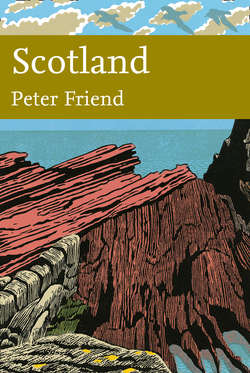Читать книгу Scotland - Peter Friend - Страница 6
ОглавлениеAuthors’ Foreword and Acknowledgements
THE PLEASURE OF ENJOYING A LANDSCAPE is greatly increased and deepened by developing some feeling for the events in the history of the Earth that may have caused it. This approach was followed in 2008, when Southern England, by Peter Friend, appeared as New Naturalist 108. The object was to provide a systematic general review of the landscapes visible in the countryside extending from Land’s End in the southwest to East Anglia in the east. Peter has now been joined by two others, Leah Jackson-Blake and James Sample, to apply a similar approach to Scotland.
Peter and his two brothers were brought up in Edinburgh, in the Midland Valley of Scotland, moving with the family for a few years to Peebles in the Southern Uplands, during part of the Second World War. Many of the family activities involved visits to the countryside, and the pleasures and interests of these visits have continued into new generations of the family. The other two authors of this book have recently moved from southern England, where the book has been written, and now enjoy the landscapes of northern Scotland where they live and work.
Landscapes are easy to look at, given reasonable weather conditions, but difficult to describe in words. But developments in computer technology now offer many ways of analysing landscapes using different mapping methods, and these, along with diagrams and photos, form the framework of this book. Working on this imagery has been the main contribution of a succession of enthusiastic helpers. Lucinda Edes, Emilie Galley and Liesbeth Renders, and the second and third authors of this book, have all contributed great skill and enthusiastic innovation to this work, and made the project enjoyable as well as successful.
The home of this project has been the Department of Earth Sciences in the University of Cambridge. Peter Friend walked into the department as a first-year student some 57 years ago, to meet his supervisor, W. Brian Harland, for the first time. Apart from a period in the Scott Polar Research Institute, he has been based in Cambridge Department of Earth Sciences ever since, teaching and exploring the scenery and geology of many parts of the world. This work has included many visits to Spitsbergen (under the guidance of W. Brian Harland), Greenland, Spain, the Arabian Gulf, India and Pakistan. This has been an exciting period to be working in geology in Cambridge, because many key advances in the subject have been made by people working in Cambridge. CASP, originally the Cambridge Arctic Shelf Programme, made a valuable donation in support of the aerial photography used in this book.
All three authors would like to acknowledge their debts to the Cambridge college system. In the case of Peter Friend, his college, Darwin, has provided him with the congenial friendship of many people from diverse backgrounds, and their skills have helped him to remain a generalist in his interests.
Any work of this sort on the British Isles owes a fundamental debt to the British Geological Survey (BGS), now based at Keyworth near Nottingham. The numerous Survey maps and reports provide a remarkable source of carefully observed and objective information. The BGS has readily provided advice and help for this project, and helped to determine the sort of coverage and level that would be best.
The photographs that form such an important part of this book have come from many sources, and we are grateful to the following organisations and individuals for allowing us to use the results of their work (individually credited in the figure captions): Aerographica (Patricia and Angus Macdonald), Nicholas Branson, British Geological Survey, Lorne Gill, Last Refuge Limited (the late Adrian Warren, and Dae Sasitorn), David Law, Planetary Visions/Science Photo Library, Scottish Natural Heritage, Nigel Trewin.
Many other people have made important contributions by providing ideas and materials. These include John R. L. Allen, Wendy Annan, Phillip Gibbard, Alan Smith, Nigel Trewin, Nigel Woodcock and Richard West.
As with the New Naturalist volume on Southern England, this volume is dedicated to the Dr John C. Taylor Foundation, which has provided the financial support essential for the production of the imagery that is such a key part of the book’s presentation. Some 50 years ago, John spent two summers exploring the geology of Spitsbergen with Peter Friend, and the support of his foundation has made both books possible.
We wish to thank HarperCollins Publishers for their support of the New Naturalist series, and particularly Myles Archibald, and then Julia Koppitz, for enthusiasm and help throughout. Hugh Brazier, Martin Brown and Robert Gillmor have brought great talents to different aspects of preparing this book.
The cover shows a view at Siccar Point, Berwickshire (Area 5). When James Hutton and some friends visited in 1788, they recognised what is now known to be an unusally good example of an unconformity. They made geological history by seeing it as evidence of the folding, erosion and deposition of strata over an incredibly long series of episodes in the Earth’s past history (see also picture).
